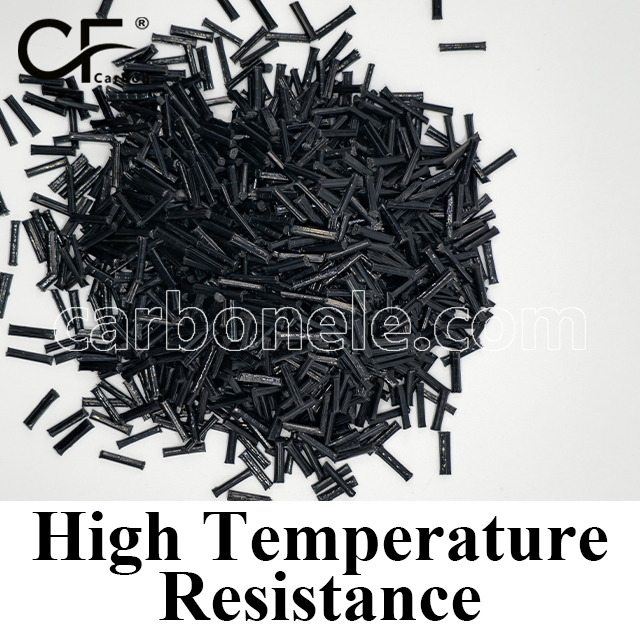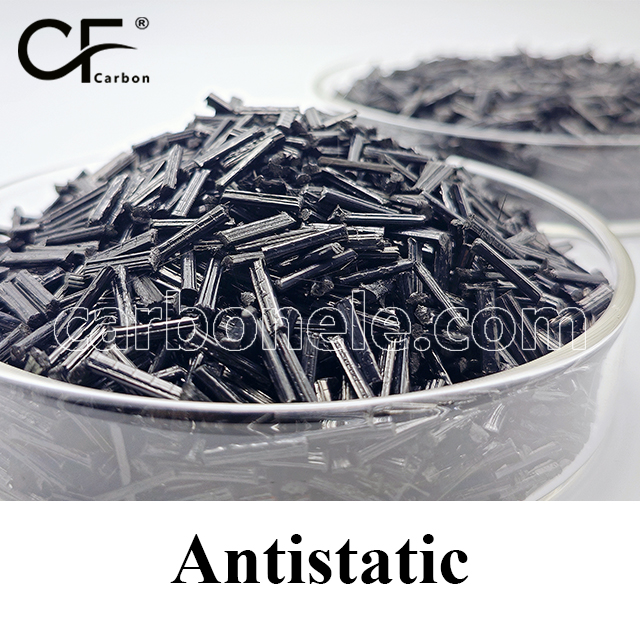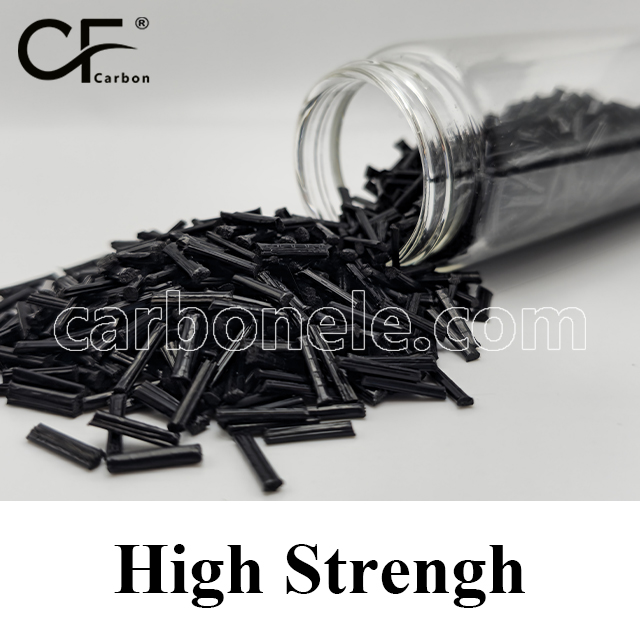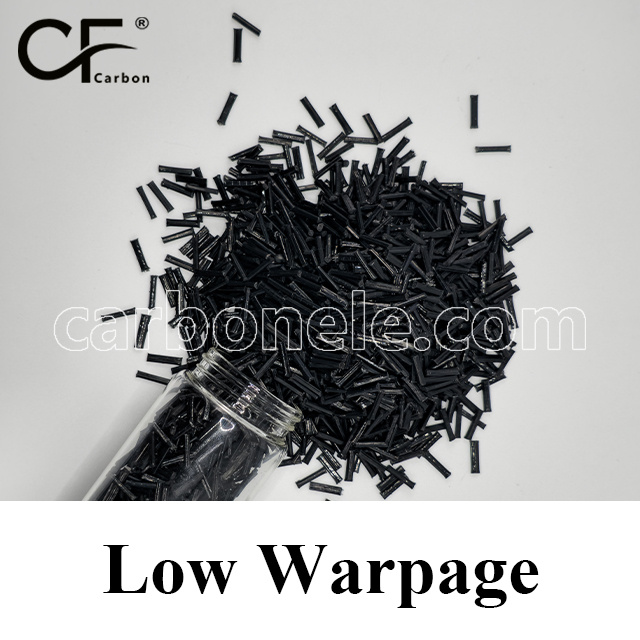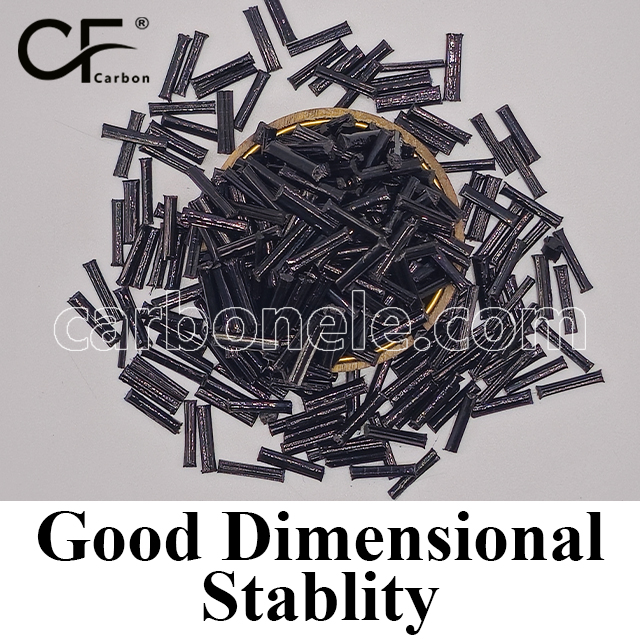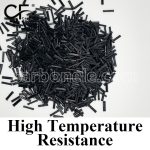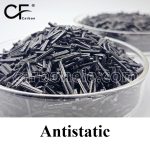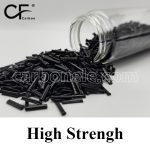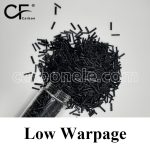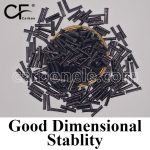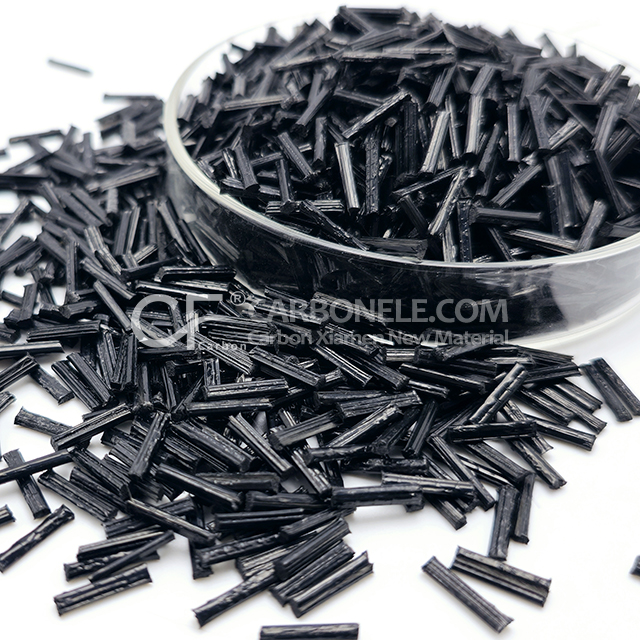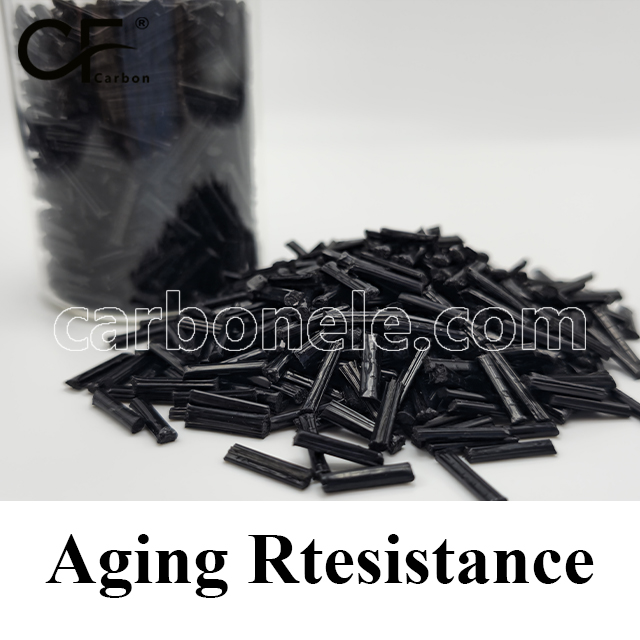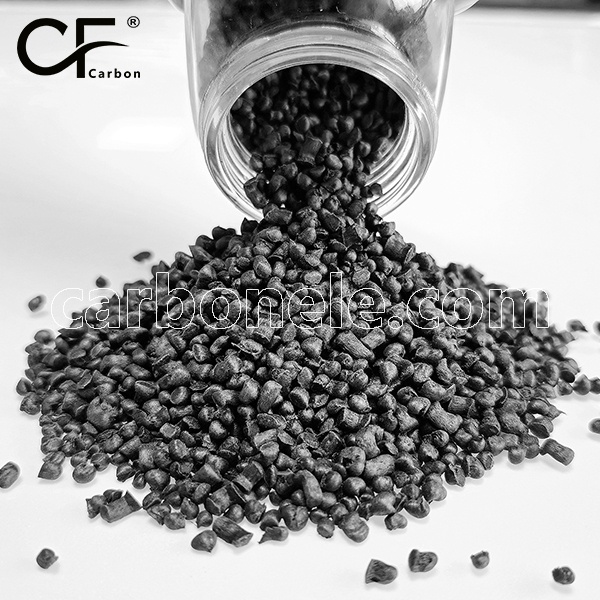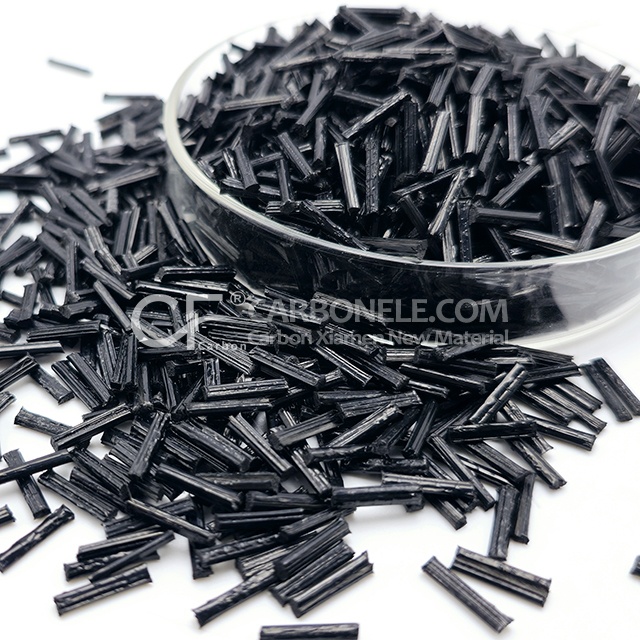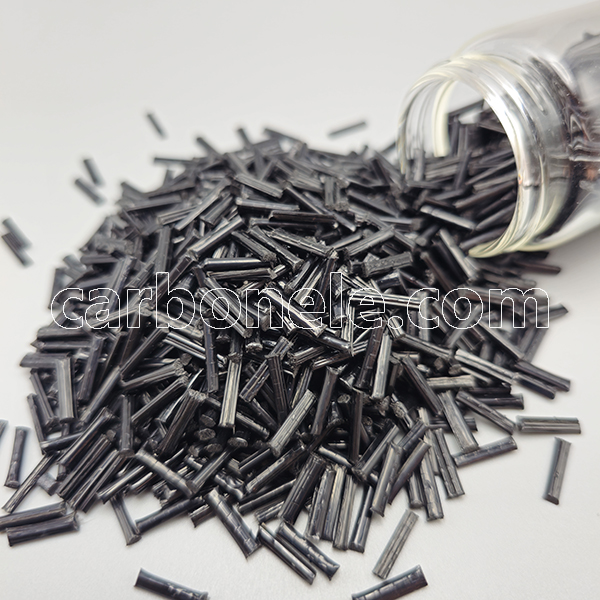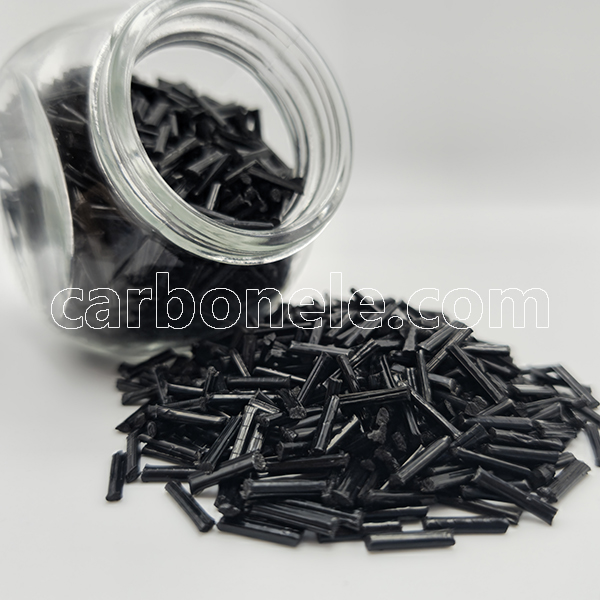
Chemical Resistant TPU-LCF60 for Fluid Handling Systems
TPU-LCF60 is an ultra-high-strength thermoplastic polyurethane reinforced with 60% long carbon fiber, delivering metal-like rigidity, superior heat resistance, and exceptional dimensional stability—while retaining TPU’s shock absorption and fatigue resilience. Ideal for extreme-load, semi-structural applications in automotive, robotics, aerospace, and ruggedized systems.
- Model number: TPU-LCF-BCA6
- Matrix Resin: Thermoplastic polyurethane (TPU)
- Reinforcing Filler: Carbon fiber
- Appearance: Granules
- Grade: Injection/extrusion grade
- Packaging: 25kgs/bag
TPU-LCF60 | 60% Long Carbon Fiber Reinforced Thermoplastic Polyurethane
TPU-LCF60 is a next-generation, ultra high strength thermoplastic elastomer composite reinforced with 60% long carbon fiber, engineered for extreme structural performance under high mechanical and thermal demands. This formulation pushes the boundaries of semi rigid polymer systems, approaching the strength to weight ratios of lightweight metals while preserving TPU’s critical properties—shock absorption, fatigue endurance, and chemical resilience.
Compared to TPU-LCF50, the increased carbon fiber content delivers even greater tensile strength, stiffness, and dimensional precision, while maintaining adequate flexibility for controlled deflection and vibration isolation. It is especially suitable for demanding applications requiring weight savings without sacrificing structural integrity in dynamic, high load environments.
TPU-LCF60 is ideal for advanced engineering use cases in automotive, robotics, aerospace subsystems, and tactical grade equipment, where traditional materials fall short under combined stress, heat, and motion.
Core Performance Highlights
Mechanical Properties
Carbon Fiber Content: 60% (Long Carbon Fiber, aligned for peak load transfer)
Tensile Strength: ≥ 100 MPa
Elongation at Break: ≥ 30%
Shore Hardness: ~99A
→ Offers metal like strength with embedded shock absorbing behavior for dynamic assemblies.
Thermal Resistance
Heat Deflection Temperature (HDT): ~130 °C
Continuous Use Temperature: Up to 120 °C
→ Withstands prolonged operation in high heat environments without losing form or function.
Environmental & Chemical Durability
Moisture Absorption: Very low — excellent stability in humid or submerged environments
Chemical Resistance: Exceptional — resistant to automotive fluids, oils, fuels, solvents, and hydraulic agents
→ Sustains integrity under prolonged chemical and environmental exposure.
Processing & Manufacturing
Molding Methods: Injection molding, extrusion, LCF compatible 3D printing
Surface Finish: Matte with highly visible carbon fiber weave/texture
Tooling Considerations: Requires hardened steel molds, high pressure injection, and optimized gate/flow path design for fiber preservation
→ Designed for high output, wear resistant manufacturing environments.
Target Applications
Automotive & Mobility
Load bearing underbody parts, semi structural engine bay components, thermal shields
→ Replaces aluminum or high glass fiber parts where heat and shock resistance are critical.
Industrial Equipment
Heavy duty isolators, structural vibration absorbers, reinforced frames
→ Suitable for high cycle machines and fluid exposed assemblies with mechanical stress.
Robotics & Automation
Chassis reinforcements, actuator linked shells, rigid flex armatures
→ Provides strength and resilience in high torque, high movement robotic applications.
Aerospace & Tactical Systems
Lightweight brackets, impact dissipating plates, advanced exoskeletal structures
→ Enables reliable, repeatable performance in high load, mission critical environments.
Performance Summary Table
| Property | Value / Description |
|---|---|
| Carbon Fiber Content | 60% (Long Carbon Fiber) |
| Tensile Strength | ≥ 100 MPa |
| Elongation at Break | ≥ 30% |
| Shore Hardness | ~99A |
| Heat Deflection Temp. | ~130 °C |
| Long Term Service Temp. | Up to 120 °C |
| Water Absorption | Very low — stable in wet or humid environments |
| Chemical Resistance | Exceptional — resistant to oils, fuels, greases, solvents |
| Wear Resistance | Ultra high — optimized for moving, load bearing parts |
| Processing Methods | Injection molding, extrusion, LCF 3D printing |
| Surface Finish | Matte with visible carbon pattern |
| Dimensional Stability | Extreme — ideal for semi structural and hybrid components |
Friction coefficient of PA12-LCF
The friction coefficient of TPU is typically between 0.3 and 0.5, while TPU-CF, with added carbon fiber, lowers the friction coefficient to between 0.2 and 0.4. The smaller the value, the better the wear resistance. Therefore, TPU-CF generally offers better wear resistance than pure TPU, especially under high-load conditions.
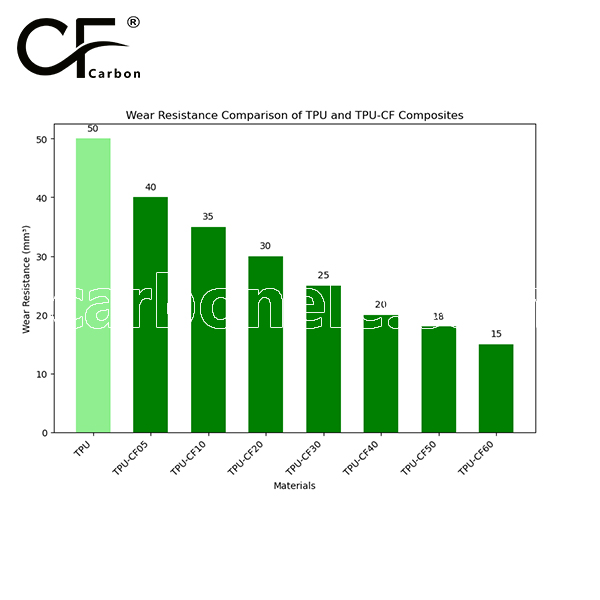
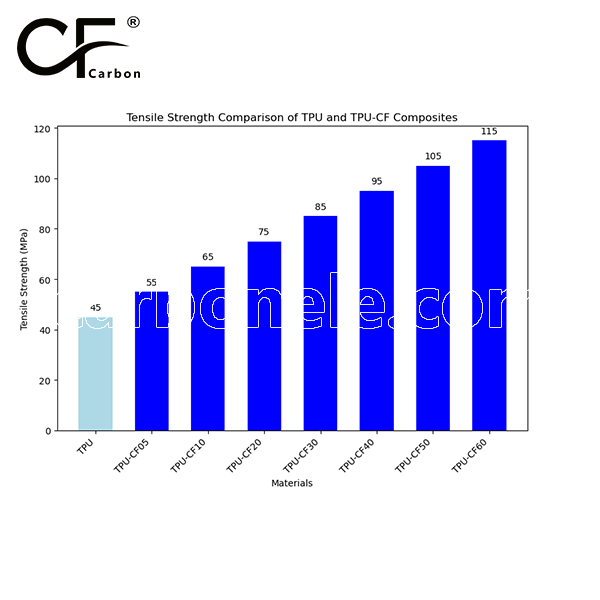

Frequently Asked Questions
Carbon (Xiamen) New Material Co., Ltd. aims to provide buyers with "one-stop" worry-free high-quality services. Here you can find all information about carbon fiber engineering plastics. If you still have questions, please send us an email for consultation!
-
How can I contact the manufacturer of a product that interests me?
When you find a product you are interested in, you can contact the manufacturer directly by sending an email and we will get back to you as soon as possible.
-
How do I find the products that interest me?
All you need to do is enter the keyword, product name in the search window and press the Enter key on your keyboard. Your search results page will then be displayed. You can also search within the product category pages on the home page. Each category is divided into subcategories, allowing you to refine your search and find products that interest you.
-
Where will I find a buying guide?
Please contact our after-sales service directly and we will provide you with a comprehensive operating guide.
-
What are CF Reinforced Thermoplastic Composites?
CF Reinforced Thermoplastic Composites are materials where carbon fibers are incorporated into a thermoplastic matrix. They combine the strength and stiffness of carbon fibers with the processability and recyclability of thermoplastics. For instance, they are used in automotive parts like bumper beams.
-
What are the benefits of CF Reinforced Thermoplastic Composites over traditional composites?
The key benefits include faster production cycles, easier recyclability, and better impact resistance. They also offer design flexibility. An example is in the manufacturing of consumer electronics casings where complex shapes can be achieved more easily.
-
How are CF Reinforced Thermoplastic Composites processed?
Common processing methods include injection molding, extrusion, and compression molding. Injection molding is widely used for mass production. For example, in the production of small components for the medical industry.
-
What industries use CF Reinforced Thermoplastic Composites?
They are utilized in aerospace, automotive, medical, and sports equipment industries. In aerospace, they can be found in interior components. In the medical field, they might be used in prosthetics.
-
How does the carbon fiber content affect the properties of the composites?
Higher carbon fiber content generally leads to increased strength and stiffness but may reduce ductility. A moderate content is often balanced for specific applications. For example, a higher content might be preferred in structural parts of a race car.
-
What are the challenges in using CF Reinforced Thermoplastic Composites?
Challenges include higher material costs, complex processing equipment requirements, and ensuring uniform fiber dispersion. Issues with adhesion between the fibers and the matrix can also arise. An example is in achieving consistent quality in large-scale production.







